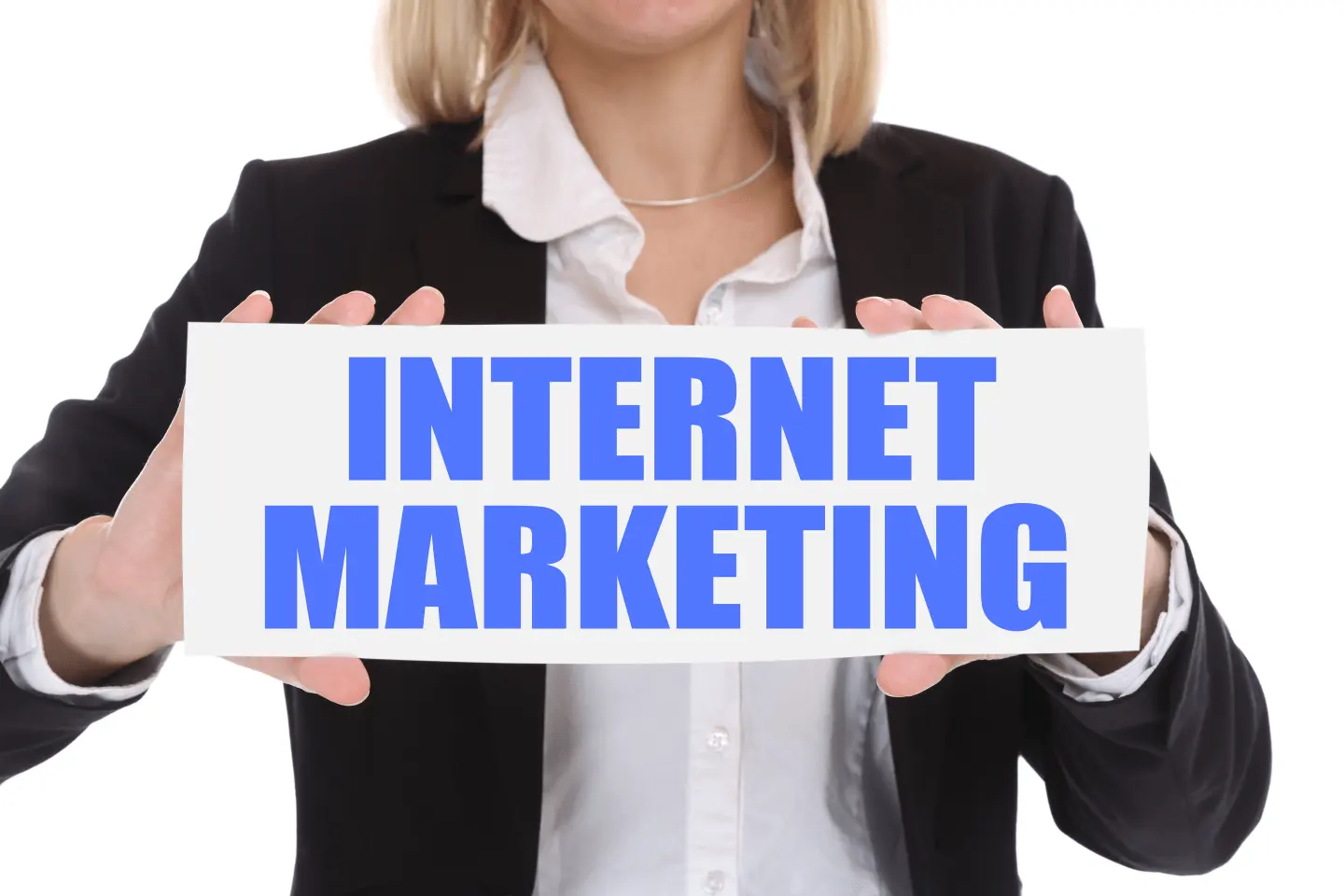Marketing is a crucial aspect of any successful business.
It involves promoting products and services to attract customers, build brand awareness, and drive sales.
From traditional methods such as print and broadcast advertising to modern techniques such as digital marketing and social media, the options for marketing are numerous and constantly evolving.
Whether you’re a small business owner or a marketing professional, staying up-to-date on the latest trends and best practices is essential for creating effective marketing strategies that achieve the desired results.
In this article, we will dive into the world of marketing, exploring its various aspects, opportunities, and challenges.
Let’s begin!
What Is Marketing?
Marketing refers to the strategies and tactics a company employs to increase awareness and sales of its products or services.
This can involve advertising, sales efforts, and product distribution, both directly and through affiliates.
The main goal of marketing is to reach a target audience and make a lasting impression.
This can be achieved through various methods such as celebrity endorsements, memorable advertising campaigns, eye-catching packaging and graphic designs, and media coverage.
The marketing and promotion teams within a company work to capture the attention of potential customers and drive sales.
What Is the Purpose of Marketing?
The purpose of marketing is to inform, persuade, and remind potential customers about a product or service, and to build a brand’s reputation and image.
It involves researching, promoting, selling, and distributing a product or service.
The ultimate goal of marketing is to create value for the customer, while also creating and maintaining a profitable relationship for the business.
Marketing efforts can take many forms, including advertising, public relations, sales promotion, direct marketing, personal selling, and online and social media marketing.
The specific mix of marketing tactics and strategies that a business employs will depend on factors such as its target market, budget, and overall marketing goals.
Overall, the purpose of marketing is to increase sales and revenue and to build long-term customer relationships by providing valuable, relevant, and meaningful experiences for the target audience.
Why Is Marketing Important?
Marketing is an essential aspect of any business, large or small, and plays a crucial role in the success of a company.
Here are a few reasons why marketing is so important:
- Awareness: Marketing helps businesses increase brand awareness and reach potential customers. This can help you stand out in a crowded market and build a loyal customer base.
- Customer Insight: Through marketing efforts, businesses can gain valuable insights into customer preferences and behaviors. This information can be used to improve products and services and to develop effective marketing strategies.
- Sales: Marketing efforts can drive sales and increase revenue. By effectively promoting products or services and creating demand, marketing can help boost sales and drive business growth.
- Competitive Advantage: Marketing helps businesses differentiate themselves from the competition and stand out in the market. A strong marketing strategy can give a company a competitive edge and help it succeed against larger, established businesses.
- Building Relationships: Marketing allows businesses to build relationships with customers and establish trust and credibility. By creating a strong connection with customers, businesses can encourage repeat purchases and create a loyal customer base.
Marketing Vs Advertising.
Marketing and advertising are both essential components of a successful business, but they are distinct concepts with different objectives and methods.
Marketing refers to the overall strategy and processes a company uses to promote and sell its products or services.
It involves research, product development, distribution, pricing, customer service, and more.
Marketing is about understanding and satisfying the needs of the target market, and it encompasses all the activities a company undertakes to achieve that goal.
Advertising, on the other hand, is a subset of marketing that specifically focuses on promoting a product or service through various media channels, such as television, radio, print, online, and more.
The goal of advertising is to raise awareness of a product or service and to persuade potential customers to purchase it.
In simple words, marketing is a broader concept that encompasses all the activities a company uses to reach its target market, while advertising is one of the methods used to achieve marketing goals.
The 4 Ps of Marketing.
Marketing is a crucial aspect of any business, as it is responsible for attracting and retaining customers.
A successful marketing strategy can help businesses increase sales, generate brand awareness, and build customer loyalty.
To create an effective marketing plan, it is important to understand the four key elements of the marketing mix: product, price, place, and promotion.
1. Product.
The first P in the marketing mix refers to the product.
The product is the item or service that the business is offering to the customer.
When developing a product, it is important to consider the target audience, the benefits the product provides, and the unique selling point (USP).
The USP is what sets the product apart from its competitors and makes it more attractive to potential customers.
For example, a company offering eco-friendly cleaning products may have a USP of using only natural, non-toxic ingredients.
This sets their products apart from other cleaning products that may contain harsh chemicals, making their products more appealing to consumers who are concerned about the environment and their health.
2. Price.
The second P in the marketing mix is price.
Price is one of the most important elements in the marketing mix, as it can make or break a product.
Pricing strategies can vary based on the target audience, the competition, and the costs involved in producing and distributing the product.
For example, a luxury brand may choose to price its products higher to maintain its premium image, while a discount brand may choose to keep prices low to attract cost-conscious consumers.
It is important to consider the target audience when setting prices, as charging too much or too little can lead to a lack of interest in the product.
3. Place.
The third P in the marketing mix refers to the place, also known as distribution.
Place refers to the channels through which a product is made available to the customer.
This can include physical retail stores, online marketplaces, or direct-to-consumer sales.
The choice of distribution channels can have a significant impact on the success of a product, as it affects the accessibility and convenience for customers.
For example, a company specializing in outdoor gear may choose to distribute its products through sporting goods stores, online marketplaces, and its own website to reach as many customers as possible.
The choice of distribution channels should align with the target audience and the product’s USP.
4. Promotion.
The final P in the marketing mix is promotion, which refers to the activities used to communicate with potential customers and build awareness about the product.
Promotion can include advertising, public relations, personal selling, and sales promotion.
The choice of promotional activities should align with the target audience, the product’s USP, and the overall marketing budget.
For example, a company launching a new line of eco-friendly products may choose to promote its products through social media, influencer partnerships, and event sponsorships.
This allows them to reach their target audience and communicate their USP in a way that is relevant and engaging.
What Are The Benefits Of Marketing?
Developing and executing well-defined marketing strategies can bring numerous benefits to a company.
While creating the ideal strategy and executing it flawlessly can be a challenge, the effort put in can result in significant rewards.
Some of these benefits include:
1. Increased Brand Awareness and Recognition.
One of the primary benefits of marketing is the ability to enhance brand awareness and recognition.
Through strategic marketing efforts, businesses can introduce their products or services to a wider audience, creating a strong brand presence in the market.
Consistent and targeted marketing campaigns help engrain the brand’s identity in the minds of consumers, making them more likely to remember and choose the brand when making purchasing decisions.
Brand awareness is a crucial element in building trust and loyalty, and effective marketing initiatives play a pivotal role in achieving this.
2. Increased Sales and Profits.
Marketing is a powerful driver of revenue growth and sales.
By reaching and persuading potential customers through various channels, businesses can generate leads and convert them into sales.
Well-executed marketing campaigns can highlight the unique selling propositions of a product or service, showcase its value, and create a sense of urgency, encouraging consumers to make a purchase.
Whether through digital marketing, traditional advertising, or other promotional activities, businesses can use marketing as a catalyst to drive sales, ultimately contributing to overall revenue growth and sustained profitability.
3. Targeted Audience Engagement.
Marketing allows businesses to precisely target their desired audience, tailoring messages and campaigns to specific demographics, interests, or behaviors.
With the advent of digital marketing tools and analytics, businesses can gather insights into consumer preferences and behaviors, allowing for more personalized and relevant communication.
Targeted audience engagement not only maximizes the effectiveness of marketing efforts but also fosters a deeper connection between the brand and its audience.
Understanding the needs and preferences of the target audience enables businesses to deliver tailored content and offers, increasing the likelihood of positive responses and interactions.
4. Competitive Advantage and Market Positioning.
In a competitive business landscape, effective marketing can provide a significant edge by establishing a unique position in the market.
Through branding, messaging, and differentiation strategies, businesses can carve out a niche for themselves and stand out from competitors.
A strong marketing strategy communicates the value proposition of a product or service, emphasizing what sets it apart from alternatives.
This differentiation builds a competitive advantage, influencing consumers to choose a particular brand over others.
Marketing also allows businesses to adapt to changing market trends, ensuring they remain relevant and maintain a strong position in the industry.
5. Improved Customer Relationships.
Successful marketing goes beyond one-time transactions; it focuses on building lasting relationships with customers.
By consistently engaging with consumers through various marketing channels, businesses can create a sense of loyalty and trust.
Effective communication, customer-centric messaging, and post-purchase engagement contribute to a positive customer experience.
Marketing initiatives such as loyalty programs, email marketing, and social media interactions foster ongoing relationships, turning one-time buyers into repeat customers.
A loyal customer base not only ensures repeat business but also becomes a valuable asset through word-of-mouth referrals and positive reviews.
6. Adaptability and Market Responsiveness.
Marketing allows businesses to stay adaptable and responsive to changing market dynamics.
Through continuous monitoring of consumer trends, competitor activities, and industry developments, businesses can adjust their marketing strategies to remain relevant.
This adaptability is crucial in addressing shifts in consumer behavior, technological advancements, or unforeseen challenges.
By staying responsive to market changes, businesses can position themselves as agile and forward-thinking, gaining a competitive edge in an ever-evolving business landscape.
Marketing serves as a dynamic tool that enables businesses to navigate uncertainties and proactively meet the evolving needs of their target audience.
7. Data-Driven Decision Making.
Marketing activities generate valuable data and insights that can inform strategic decision-making.
Through analytics tools and metrics, businesses can track the performance of various marketing channels, campaigns, and customer interactions.
This data-driven approach enables businesses to identify what works well, understand customer preferences, and optimize marketing strategies for better results.
By leveraging analytics, businesses can make informed decisions, allocate resources effectively, and continuously refine their marketing efforts based on real-time feedback and performance indicators.
8. Innovation and Product Development.
Marketing is intricately linked to innovation and product development.
Understanding customer needs and market trends allows businesses to identify gaps in the market or areas for improvement in existing products.
Through effective market research and customer feedback gathered during marketing campaigns, businesses can refine existing offerings or innovate new products that better meet customer demands.
Marketing, therefore, serves as a conduit for innovation, guiding businesses to create solutions that resonate with their target audience and stay ahead of the competition.
9. Global Reach and Market Expansion.
Marketing allows businesses to reach a global audience regardless of region.
Digital marketing channels, such as social media, online advertising, and e-commerce platforms, provide opportunities for businesses to showcase their offerings to an international market.
Strategic marketing efforts can facilitate market expansion, allowing businesses to tap into new demographics and regions.
Whether through localized campaigns or global branding initiatives, marketing plays a pivotal role in helping businesses extend their reach and establish a presence in diverse markets.
What are the Limitations of Marketing?
Despite the numerous motivations that drive companies to engage in marketing efforts, there are several constraints inherent to the marketing field.
Some of these disadvantages include:
1. No Guaranteed Success.
Marketing is a complex and multifaceted process that requires careful planning and execution.
Despite the best efforts of marketers, there is no guarantee that their campaigns will be successful.
Factors such as competition, market trends, and consumer behavior can all impact the success of a marketing campaign, making it difficult for companies to predict the outcome.
This lack of certainty can be a major drawback for companies, especially those with limited resources and a tight budget.
2. Inability to Control Consumer Perceptions.
Marketers face a significant limitation in their inability to fully control or dictate consumer perceptions.
While marketing efforts aim to shape and influence how a product, service, or brand is perceived, external factors beyond the marketer’s control, such as online reviews, word-of-mouth, or social media discussions, can significantly impact consumer opinions.
Negative reviews or viral incidents can quickly overshadow positive marketing efforts, underscoring the challenge of managing and controlling the overall brand image.
This limitation emphasizes the importance of delivering consistent quality, transparency, and maintaining open communication to build and protect a positive brand perception.
3. Cost.
Marketing can be expensive, especially for smaller companies with limited budgets.
Marketing campaigns often require significant investments in areas such as advertising, promotions, and market research.
The cost of these efforts can put a strain on a company’s finances, especially if the campaign is not successful.
Additionally, some marketing efforts, such as advertising, may require ongoing expenses to maintain their effectiveness.
Companies need to carefully consider their budget when developing marketing strategies to ensure that they can achieve their desired results without putting too much strain on their finances.
4. Adapting to Rapid Technological Changes
The rapid evolution of technology presents a constant challenge for marketers.
Staying abreast of emerging technologies, changing algorithms on digital platforms, and understanding new trends can be overwhelming.
This limitation requires marketers to invest time in ongoing learning, adaptability, and embracing a culture of innovation within their teams.
Failure to keep up with technological changes can lead to outdated strategies, reduced visibility, and missed opportunities, highlighting the need for continuous education and a proactive approach to integrate new technologies into marketing practices.
5. Oversaturation.
The digital age has ushered in an era of information saturation, posing a significant limitation for marketers.
Oversaturation refers to the phenomenon where there are too many marketers vying for the attention of consumers.
With the increasing number of advertisements and promotional messages that consumers are exposed to on a daily basis, it has become increasingly difficult for marketers to capture their attention and make an impact.
As a result, many marketing messages are ignored or forgotten, making it more challenging for companies to achieve their desired results.
6. Ethical and Privacy Concerns.
Marketers must contend with ethical and privacy concerns, especially in the age of data-driven marketing.
The collection, storage, and utilization of consumer data for targeted advertising raise ethical questions regarding privacy and consent.
Striking a balance between personalized marketing efforts and respecting consumer privacy is a delicate challenge.
The misuse of data or the perception of invasive practices can lead to reputational damage and loss of consumer trust, emphasizing the importance of adhering to ethical standards and stringent data protection regulations.
7. Evolving Consumer Preferences
Consumer preferences are dynamic and can change rapidly, presenting a challenge for marketers to stay attuned to shifting trends.
What may appeal to consumers today may lose relevance tomorrow, necessitating constant adaptation to evolving preferences.
The rise of social media influencers and the impact of viral trends are examples of how quickly consumer preferences can change.
Marketers need to be agile, conduct ongoing market research, and leverage data analytics to understand and anticipate these shifts, ensuring their strategies align with current consumer preferences.
8. Social and Political Sensitivities
In an era of heightened social and political awareness, marketers must navigate the complexities of sensitive issues.
Misjudging societal sentiments or taking a stance on divisive topics can lead to backlash and damage the brand’s reputation.
Striking the right balance between addressing relevant social issues and avoiding controversy is challenging, requiring marketers to stay attuned to the cultural and political climate.
Engaging in open dialogue, being transparent, and aligning with values that resonate positively with the target audience can help mitigate the risks associated with social and political sensitivities.
9. Customer Bias
Customer bias is another limitation of marketing.
This occurs when consumers have preconceived notions about a product or service, which can impact their ability to objectively evaluate its value.
For example, a consumer who has had a negative experience with a particular brand may be less likely to purchase products from that brand in the future, even if the company has made significant improvements.
This type of bias can be difficult for marketers to overcome, as it requires a shift in consumer attitudes and perceptions.
10. Economy-Dependent
The success of marketing efforts is also dependent on the state of the economy.
During economic downturns, consumers may be less likely to make purchases, making it more challenging for companies to achieve their desired results.
In these situations, companies may need to adjust their marketing strategies to reflect the changing economic conditions and consumer behavior.
Additionally, economic conditions can impact the availability and cost of marketing resources, such as advertising space and promotional materials.
What Are Some Popular Marketing Strategies?
The field of marketing encompasses a wide range of strategies, each with its own unique characteristics.
As the industry evolves, the different strategies below may be more suitable for certain companies than others.
Traditional marketing strategies.
Traditional marketing strategies refer to the marketing techniques that have been in use for several decades.
These techniques have evolved over time, but their underlying principles have remained unchanged.
Traditional marketing strategies are designed to reach potential customers through various media channels and platforms and make a lasting impression on them.
Some of these traditional marketing strategies are:
1. Outdoor Marketing.
Outdoor marketing is a type of advertising that reaches potential customers through billboards, posters, and other physical forms of advertising.
This type of marketing is best suited for businesses that have a local or regional focus and want to reach customers in a specific geographic area.
Outdoor advertising is highly visible, and it is an effective way to get your message in front of a large number of people.
Outdoor advertising can include billboard advertising, bus and train advertising, and street furniture advertising, such as bus shelters and phone booths.
Billboard advertising is a highly effective form of outdoor advertising, as it allows businesses to reach a large number of people in a specific geographic area.
Billboards are placed in high-traffic areas, such as highways and busy intersections, which means that they are seen by a large number of people each day.
The cost of billboard advertising varies based on the location and size of the billboard, as well as the length of time the advertisement will be displayed.
2. Print Marketing.
Print marketing is a type of advertising that uses printed materials, such as flyers, brochures, and magazines, to reach potential customers.
This type of marketing is best suited for businesses that want to reach customers in a specific geographic area, or for businesses that want to promote their products or services to a specific target audience.
Flyers are a highly effective form of print marketing, as they can be distributed directly to potential customers in a specific geographic area.
Brochures and magazines are also effective forms of print marketing, as they provide a more in-depth look at a business’s products or services.
Brochures can be mailed directly to potential customers, or they can be distributed at trade shows, events, or other public gatherings.
3. Direct Marketing.
Direct marketing is a type of advertising that reaches potential customers through direct mail or telemarketing.
Direct marketing is best suited for businesses that want to reach specific target audiences and for businesses that have a large customer database.
Direct mail is a type of direct marketing that involves sending promotional materials, such as flyers, brochures, and catalogs, directly to potential customers.
Direct mail is a highly effective form of marketing, as it allows businesses to reach specific target audiences and tailor their message to the needs and interests of those audiences.
Telemarketing is a type of direct marketing that involves making phone calls to potential customers in order to promote products or services.
Telemarketing is a highly effective form of marketing, as it allows businesses to reach specific target audiences and engage in two-way communication with those audiences.
4. Event Marketing.
Event marketing is a type of advertising that involves promoting products or services at trade shows, events, or other public gatherings.
This type of marketing is best suited for businesses that want to reach potential customers in a face-to-face setting, or for businesses that want to build brand awareness and create a lasting impression on potential customers.
Trade shows are a highly effective form of event marketing, as they allow businesses to showcase their products or services to a large number of potential customers in a single location.
Trade shows also provide businesses with the opportunity to network with other businesses and learn about the latest industry trends.
Events such as product launches, workshops, and seminars are also effective forms of event marketing.
These events allow businesses to engage with potential customers in a face-to-face setting, and to showcase their products or services in a more interactive way.
Businesses can also use events to build brand awareness and to create a lasting impression on potential customers.
5. Television Marketing.
Television marketing remains a powerful tool for reaching a broad audience and building brand awareness.
Digital advancements have transformed television marketing through connected TVs, streaming services, and online platforms.
Businesses can create targeted television ads, ensuring their message reaches specific demographics.
The integration of interactive elements in smart TVs and streaming apps enables users to engage with advertisements, providing businesses with valuable insights.
Television marketing, both traditional and digital, continues to be a key strategy for reaching a wide audience and making a lasting impression.
6. Radio Marketing.
Radio marketing provides an auditory platform for businesses to engage with their audience.
Radio advertisements, sponsorships, and promotions allow for creative storytelling and can be particularly effective for local or regional targeting.
Businesses can choose from various formats, including live reads, jingles, and endorsements by radio hosts.
As with other forms of marketing, the key lies in understanding the target audience and selecting appropriate radio channels and time slots to maximize the impact of the campaign.
Digital Marketing Strategies.
Digital marketing has become an essential part of business today, with more and more companies leveraging the power of the internet to reach new customers and promote their products or services.
Below are some popular digital marketing strategies:
1. Blogging.
Blogging is one of the simplest and most effective forms of digital marketing.
By regularly publishing relevant and engaging content on a website, marketers can attract and retain a large following of interested readers.
Blogging can help build a brand and establish a person or a company as an authority in their industry, while also providing valuable information to their target audience.
Blogging is also a great way to drive traffic to a website, as each blog post can be optimized for specific keywords and shared on social media and other online platforms.
2. Affiliate Marketing.
Affiliate marketing is a performance-based marketing strategy in which companies compensate affiliates for bringing traffic or sales to their website through the affiliate’s marketing efforts.
Affiliates, often bloggers or influencers, promote products or services, and earn a commission for each sale or click generated through their unique affiliate link.
This model leverages the influence and reach of individuals who have built a loyal audience, making it a cost-effective way for businesses to expand their online presence and increase sales through collaborative partnerships.
The flexibility and cost-effectiveness of affiliate marketing make it a popular choice for businesses looking to extend their online reach through a network of motivated affiliate marketers.
3. CPA Marketing.
Cost Per Action (CPA) marketing is an advertising model where advertisers pay for a specific action, such as a lead, sale, or click, rather than for impressions or views.
CPA marketing is performance-driven, making it a measurable and efficient strategy for businesses.
Advertisers set a predetermined cost for a particular action, and publishers or affiliates earn a commission when users complete that action.
This model aligns incentives between advertisers and publishers, as advertisers only pay for actual results, making it a results-oriented and ROI-focused approach in the digital marketing landscape.
4. Search Engine Optimization (SEO).
Search Engine Optimization is a foundational digital marketing strategy aimed at improving a website’s visibility on search engines like Google.
This involves optimizing various elements such as website content, meta tags, and images to align with search engine algorithms.
Creating high-quality, relevant content, incorporating strategic keywords, and building quality backlinks are key components of a successful SEO strategy.
By enhancing a website’s SEO, businesses can increase organic traffic, improve search engine rankings, and ultimately reach a broader audience.
5. Search Engine Marketing (SEM).
Search Engine Marketing complements organic SEO efforts by utilizing paid advertising to increase a website’s visibility on search engine results pages.
The most common form of SEM is pay-per-click (PPC) advertising, where businesses bid on keywords to display ads at the top of search results.
SEM provides an immediate boost in online visibility, driving targeted traffic to a website.
Effective SEM campaigns involve keyword research, compelling ad copy, and strategic bidding to maximize return on investment.
With well-optimized SEM, businesses can capture the attention of users actively searching for products or services, increasing the likelihood of conversions.
6. Content Marketing.
Content marketing is all about creating and distributing useful, consistent, and relevant content to attract and engage a target audience.
This content can take various forms, including blog posts, articles, videos, infographics, and social media posts.
The goal is to provide information that addresses the audience’s needs, builds brand credibility, and establishes authority in the industry.
Content marketing not only helps in educating and entertaining the audience but also plays a crucial role in driving organic traffic, building brand loyalty, and influencing purchasing decisions.
7. Social Media Marketing.
Social media marketing involves utilizing social media platforms such as Facebook, Instagram, Twitter, and LinkedIn to connect with the target audience.
Businesses leverage these platforms to share content, engage with followers, run targeted advertisements, and build brand awareness.
The interactive nature of social media allows companies to create a more personal connection with their audience, receive feedback, and stay top-of-mind.
Social media marketing is essential for building a brand’s online presence and fostering a community around the products or services offered.
8. Influencer Marketing.
Influencer marketing involves collaborating with individuals who have a significant following and influence within a specific niche.
Brands leverage the trust and credibility that influencers have built with their audience to promote their products or services.
This strategy is effective in reaching a highly engaged and targeted audience, as followers often value and trust the recommendations made by influencers.
Successful influencer marketing campaigns focus on authentic collaborations, where influencers align with the brand’s values, creating a genuine connection with their audience.
9. Email Marketing.
Email marketing remains a powerful tool for nurturing leads, retaining customers, and driving conversions.
It involves sending targeted and personalized emails to a segmented audience.
Email campaigns can include newsletters, promotional offers, product updates, and more.
With the ability to tailor messages to specific customer segments, businesses can create personalized and relevant content, increasing the likelihood of engagement and conversions.
Automated email workflows further enhance efficiency, allowing businesses to deliver timely and tailored messages based on user actions or preferences.
10. Pay-Per-Click (PPC) Advertising.
Pay-Per-Click advertising is an advertising model where advertisers pay a fee each time their ad is clicked.
Popular platforms like Google Ads and social media channels offer PPC advertising opportunities.
This strategy allows businesses to bid on keywords relevant to their products or services, ensuring that their ads appear when users search for those terms.
PPC is a quick and effective way to drive targeted traffic to a website, especially for businesses looking to generate immediate results.
Strategic keyword selection, compelling ad copy, and continuous monitoring and optimization are crucial for a successful PPC campaign.
11. Video Marketing.
Video marketing has become increasingly popular as internet users’ consumption of video content continues to rise.
Businesses utilize platforms like YouTube, TikTok, and social media channels to create engaging and informative video content.
Video marketing can include product demonstrations, tutorials, behind-the-scenes looks, and storytelling.
The visual and dynamic nature of videos captures the audience’s attention and effectively communicates messages.
Integrating video content into digital marketing strategies enhances brand visibility, engages audiences, and fosters a more memorable connection with the brand.
12. Mobile Marketing.
Mobile marketing focuses on reaching and engaging audiences through mobile devices, including smartphones and tablets.
With a growing number of users accessing the internet via mobile devices, optimizing marketing strategies for mobile platforms is crucial.
Mobile marketing encompasses various tactics, such as responsive website design, mobile-friendly email campaigns, and in-app advertisements.
Additionally, location-based marketing, leveraging users’ geographic data, allows businesses to deliver targeted and relevant content based on the user’s location.
Ensuring a seamless and enjoyable mobile experience contributes to higher user satisfaction and increased chances of conversion.
Conclusion.
Marketing is a dynamic and ever-changing field that plays a vital role in the success of businesses.
From identifying target audiences to choosing the right channels, a well-planned and executed marketing strategy can help drive growth, increase brand awareness, and generate leads.
As technology and consumer behavior continue to evolve, it is crucial for businesses and marketing professionals to stay informed and adapt their strategies accordingly.
Whether you are a small business owner or a marketing expert, the key to success in marketing is to understand your audience, measure your results, and continuously refine and improve your approach.
By following these principles and keeping up with the latest trends and best practices, you can develop a winning marketing strategy that delivers results for your business.







